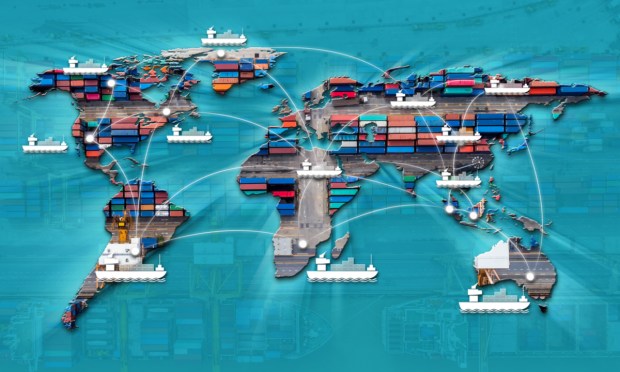Blockchain, Smart Contracts and DeFi Help Modernize B2B Transactions, Interactions

Web3 has a branding problem.
Far from being simply synonymous with crypto, decentralized finance and blockchain will do much to transform industries that have been mired in paper, in invoices, fragmented and friction-filled when it comes to payments.
And, as Austin Noronha, managing director of the U.S., and Ludovic Copéré, senior investment director, at Sony Ventures, told PYMNTS’ Karen Webster, the potential is there to improve relationships between buyers and suppliers in the process.
“As a user,” Copéré said, “I probably don’t care if something’s Web3 or not.” But the term has become shorthand for the future of the internet — albeit one that, in the popular imagination, is crowded by cryptos, NFTs and smart contracts, the programmable tokenized instruments that, at trigger points, released predefined released funds.
Moving Beyond the Crypto
Web3’s firmly in Sony’s sights, where Sony Network Communications and Startale said they’d formed a “capital alliance” to build out Web3 infrastructure. As part of the joint effort, Startale received $3.5 million in seed financing from Sony. It’s a capital commitment, Webster observed, that came in the summer — and during a year when funding for Web3 firms has fallen by more than 80% year over year. Non-fungible tokens (NFTs) have been a boom-bust proposition at best. And no one needs reminding that bitcoin et al. are volatile on a good day.
Noted Copéré, “It’s one thing for a hobbyist or even a brand to create, let’s say, an NFT, which is basically a smart contract.” But the difficultly lies in getting things to scale, to combine customer relationship management (CRM) systems and enterprise resource planning (ERP) systems and IT systems between enterprises so that supply chains and vendor management becomes fully modernized.
B2B in Focus
First thing’s first:
“We are interested in Web3 more from the B2B infrastructure side — and we’re not interested in the crypto side,” Noronha said. And by and large the Sony funds are still largely in wait-and-see mode — sizing up what’s out there, sizing up where Web3 can solve problems in business-to-business (B2B) transactions.
Noronha said that the technology can, and should, be great, but he noted that in these “slow-moving industries,” the rate of adoption may be slow, and scale will take time.
“We’ll be looking at how scalable the model is before placing any bets,” he told Webster. The initial investments, the duo said to Webster will, in Copéré words, wind up “bridging the Web2 world with Web3 worlds,” spanning on-chain data analytics, wallet SDKs and traditional finance. Web3’s largest user base, he said, has embraced stablecoins. The developer community has been growing by leaps and bounds.
And the shift to the cloud through the past two decades may prove instructive, as early stage vendors and early adopters spurred one another to new heights of innovation — and the same might be seen with the evolution of Web3. Copéré said that blockchain, smart contracts and cryptography are already improving cybersecurity.
The conversation took up where an earlier discussion with the investment professionals left off, in June, looking at advanced technologies such as robotics and AI. As detailed here, Sony’s investments are divided into two funds: There’s the 100% Sony money fund, and then there’s the fund seeded with capital from external limited partners.
Copéré and Noronha pointed to one current investment, in a firm called Theta Networks, which started in the entertainment space, tokenizing the computational and memory that is used to stream content — and it does so by building its own layer of the blockchain stack and its own token. The company has branched out into machine learning and training.
“It may not be branded as Web3,” Copéré said of Theta’s efforts, “but we see Web3 and decentralization as a way to counterbalance the inherent centralization of AI.” And Copéré added, “There’s a whole spectrum between fully centralized and fully decentralized companies. It may not make sense [now] to swing the pendulum 100% toward one or the other.”
The Verticals
Noronha said that Web3 may dovetail with investments already made by Sony in healthcare — doing much to eliminate the voluminous paper that crosses between all manner of stakeholders. The same can be said of logistics and supply chains, insurance, too.
“The paperwork that happens, the transaction delays that happen,” he said, “everything can be optimized — and the first thing is to digitize. That’s the first hurdle.” Distributors can use blockchain and smart contracts to enable those transactions, abandoning the fax machines.
“It’s going to take time,” Noronha said. “It takes a huge effort to change those industries and hopefully they see the value coming out of Web3. If they see the value, then the legacy industries will change.”

